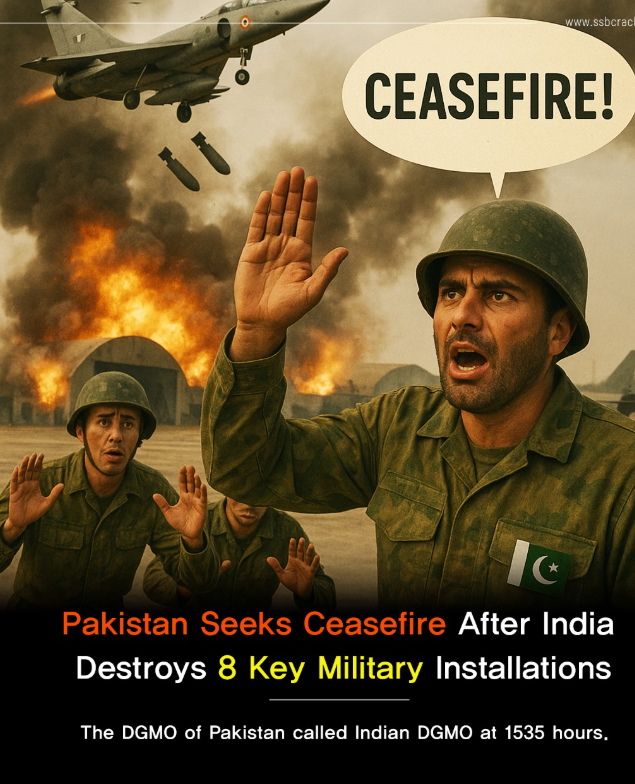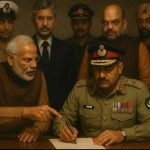In a dramatic development, Pakistan’s Director General of Military Operations (DGMO) urgently contacted his Indian counterpart at 1535 hours today, following India’s precision strikes on eight strategic military sites in Pakistan and Pakistan-occupied Kashmir (PoK). The strikes, carried out by the Indian Armed Forces, were part of Operation Sindoor, targeting militant infrastructure in response to a deadly terror attack in Pahalgam on April 22, 2025.
Following the attacks, both nations have agreed to a ceasefire, which will take effect from 1700 hours today. According to military sources, the ceasefire will encompass all land, air, and sea operations, marking a critical step towards reducing tensions along the volatile border.
The Indian military’s strikes on May 9, 2025, severely damaged key Pakistani military assets, with sources claiming the elimination of several high-value targets. These operations are said to have inflicted significant damage to Pakistan’s defense infrastructure, with reports confirming multiple casualties. Pakistan had earlier vowed to retaliate, but diplomatic channels opened following the Indian strikes, leading to the urgent call between the DGMOs.
India’s response has been firm. The Indian government emphasized that peace can only be achieved after sustained action against terrorism and cross-border militancy. While the ceasefire has been agreed to for now, New Delhi remains resolute in its stance that it will continue to take necessary action to secure its borders and ensure national security.
This escalation comes amidst the backdrop of long-standing regional tensions between the two nuclear-armed nations, primarily centered on the disputed region of Kashmir. The attack on Indian pilgrims in Pahalgam earlier this year had already heightened military tensions, leading to a string of retaliatory actions and military operations.
The ceasefire is viewed as a temporary measure to prevent further escalation, but skepticism remains on both sides. Pakistan has long sought international mediation, especially regarding the Kashmir issue, while India remains steadfast in advocating for a bilateral approach to resolving conflicts.
Both countries have expressed their intent to review the situation in the coming days, with the international community urging restraint and dialogue. The successful de-escalation of the current crisis will hinge on both sides’ commitment to honoring the ceasefire and addressing the root causes of the conflict, including terrorism and territorial disputes.
The situation remains fluid, and military personnel on both sides are on high alert as the ceasefire begins to take effect. The next few hours will be crucial in determining whether this momentary pause in hostilities can evolve into a lasting resolution.













